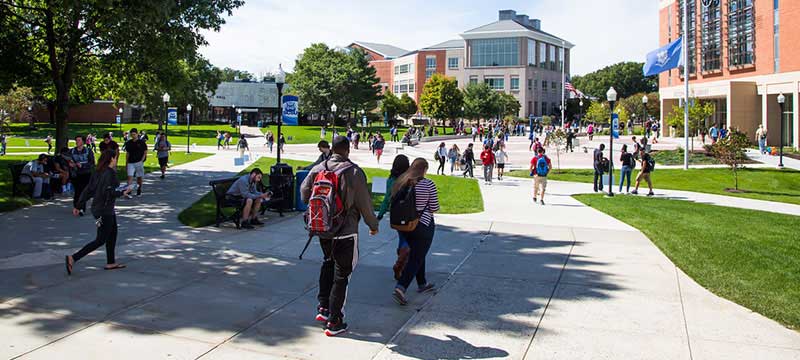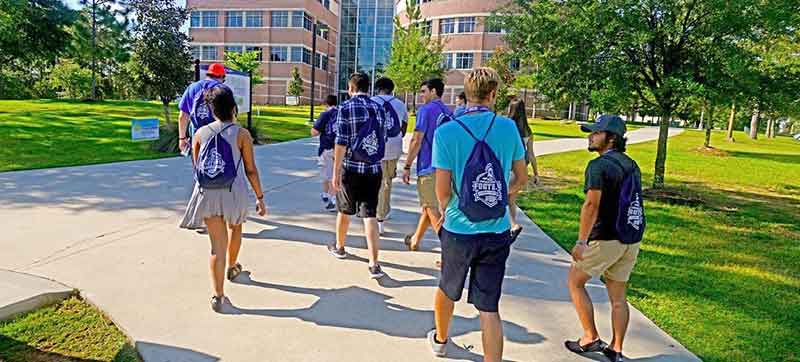The Experience of Specific Student Populations
The examples featured in this brief highlight uses of NSSE results related to the needs of specific student populations. Data illuminating the distinctive engagement patterns of first-year students, transfer students, or commuter students, for example, can suggest strategies to improve the educational experience and outcomes of these students through changes in such areas as programming, advising, institutional communications, and campus resources.
Redesigning the First‐Year Seminar
In fall 2012, University of Mount Union launched a new four-credit, topic-based, e-Portfolio-supported first-year seminar (FYS), replacing the former one-credit introduction to college course. In the new course, all FYS instructors are full-time faculty and serve as the students’ first-year academic advisors.
To assess the redesigned FYS, Mount Union reviewed results from its 2013 and 2015 NSSE administrations. NSSE 2013 reports were shared with department chairs, faculty, students, and administrators, who reviewed the results in multiple forums such as student senate meetings, presentations, and focus groups. Among other findings, the 2013 results indicated that Mount Union’s first-year students rated the quality of their interactions lower compared to their counterparts at peer and aspirant institutions.
Based on this finding, the FYS core group decided to link additional FYS enhancements to NSSE’s Quality of Interactions Engagement Indicator. To do so, faculty collaborated with the first-year experience (FYE) director to introduce co-curricular activities into the course and to encourage a seamless learning environment both inside and outside the classroom. Starting in fall 2014, each FYS class was assigned a peer mentor to guide students through cocurricular and transitional issues. Instructors also worked with the FYE director to implement early intervention strategies for students. Mount Union’s NSSE 2015 Quality of Interaction results showed improvement and, indeed, were higher than those of peer and aspirant institutions. Mount Union continues to use their NSSE 2015 data to identify and explore further actions to enhance their students’ first-year experience.
Improving the First‐Year Experience

Southern Connecticut State University
Every year since its inauguration, in 2007, the Beginning College Survey of Student Engagement (BCSSE) has been administered at Southern Connecticut State University (Southern) during orientation, and the university has been pushing the boundaries of how institutions use BCSSE data.
Prior to the first day of classes, for example, First-Year Experience seminar instructors receive a BCSSE Student Advising Report for each student, with individualized information on a student’s commitment to the institution, expected academic difficulty, and self-perception of academic preparation for college. In addition, the Student Success Task Force, chaired by the Dean of the School of Arts and Sciences and the Vice President for Student Affairs, combined BCSSE data with other data in predictive modeling to identify the most important predictors of student academic learning, persistence, and graduation outcomes. Overall, BCSSE and NSSE results inform important conversations at Southern about the most effective ways to promote students’ learning and development.
Engaging Commuter Students

University of West Florida
NSSE data are integral to the University of West Florida’s (UWF) accreditation activities with the Southern Association of Colleges and Schools Commission on Colleges. In 2015, UWF established a Quality Enhancement Plan titled “Communication for Professional Success” focusing on High-Impact Practices (HIPs), with an emphasis on written and spoken communication outcomes. An action team was established to review the relevant assessment data, including UWF’s 2014 NSSE results. This review, in addition to reinforcing the university’s interest in expanding the implementation of communication HIPs, helped spark a new focus on commuter students—a substantial proportion of the UWF student population. Unsurprisingly, less than half of these students reported participating in activities outside the classroom. Using these findings, UWF launched a campaign to connect commuter students to campus information, events, and activities—so as to facilitate their lifelong connections to the institution by broadening their awareness of campus resources, improving their participation rates, and increasing the number of students living on campus.
Infusing Conversations With Data On Diverse Students’ Needs
In 2016, the University of Minnesota Duluth (UMD) Division of Student Life held a retreat for division directors that focused on a common reading of Diverse Millennial Students in College: Implications for Faculty and Student Affairs* and conversations about how these implications related to students at UMD, identifying areas where UMD was successfully meeting the needs of its various student populations and where it might be having some difficulty. At the center of the conversations were UMD’s most recent NSSE results, which indicated that students of color interacted with staff less than their peers at other institutions and were more likely than their peers in other racial-ethnic groups to have outside responsibilities (work, family, etc.), potentially impacting their ability to manage academic commitments. These findings combined with institutional data related to retention and student success elicited several questions including: Is the Division of Student Life doing all it can to proactively meet the needs of diverse populations? How is the division creating a positive environment for all students? With a recent plateau in enrollment, UMD knew they could not wait to address these concerns. Therefore, UMD has begun to adjust practice based on the areas identified from NSSE in order to better promote success among students of color.



